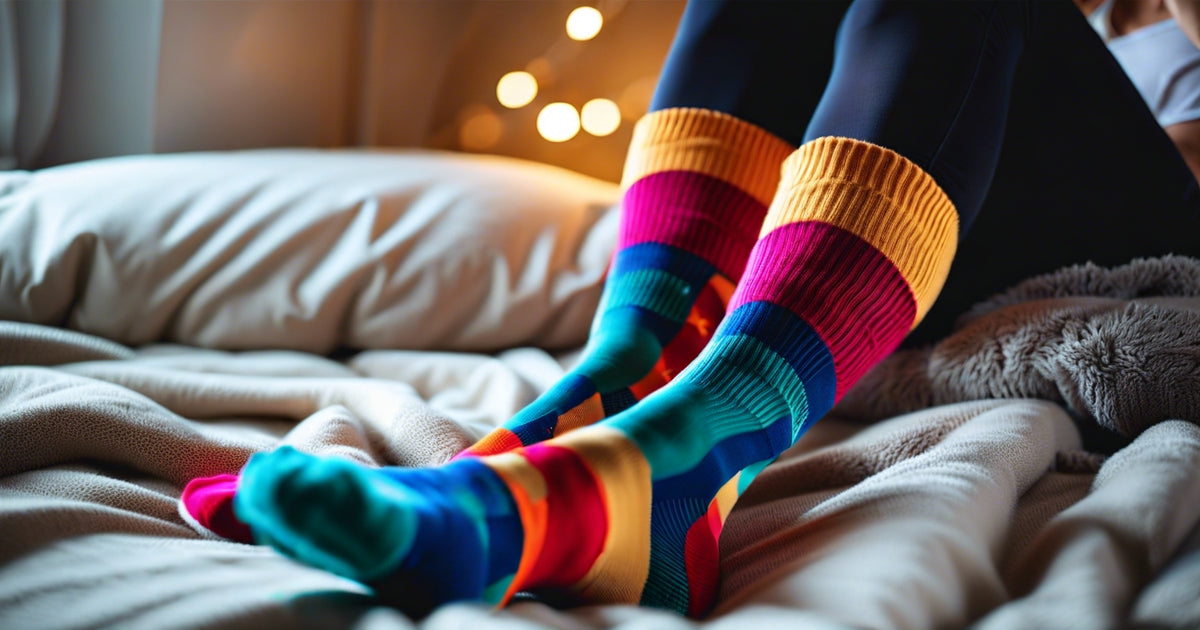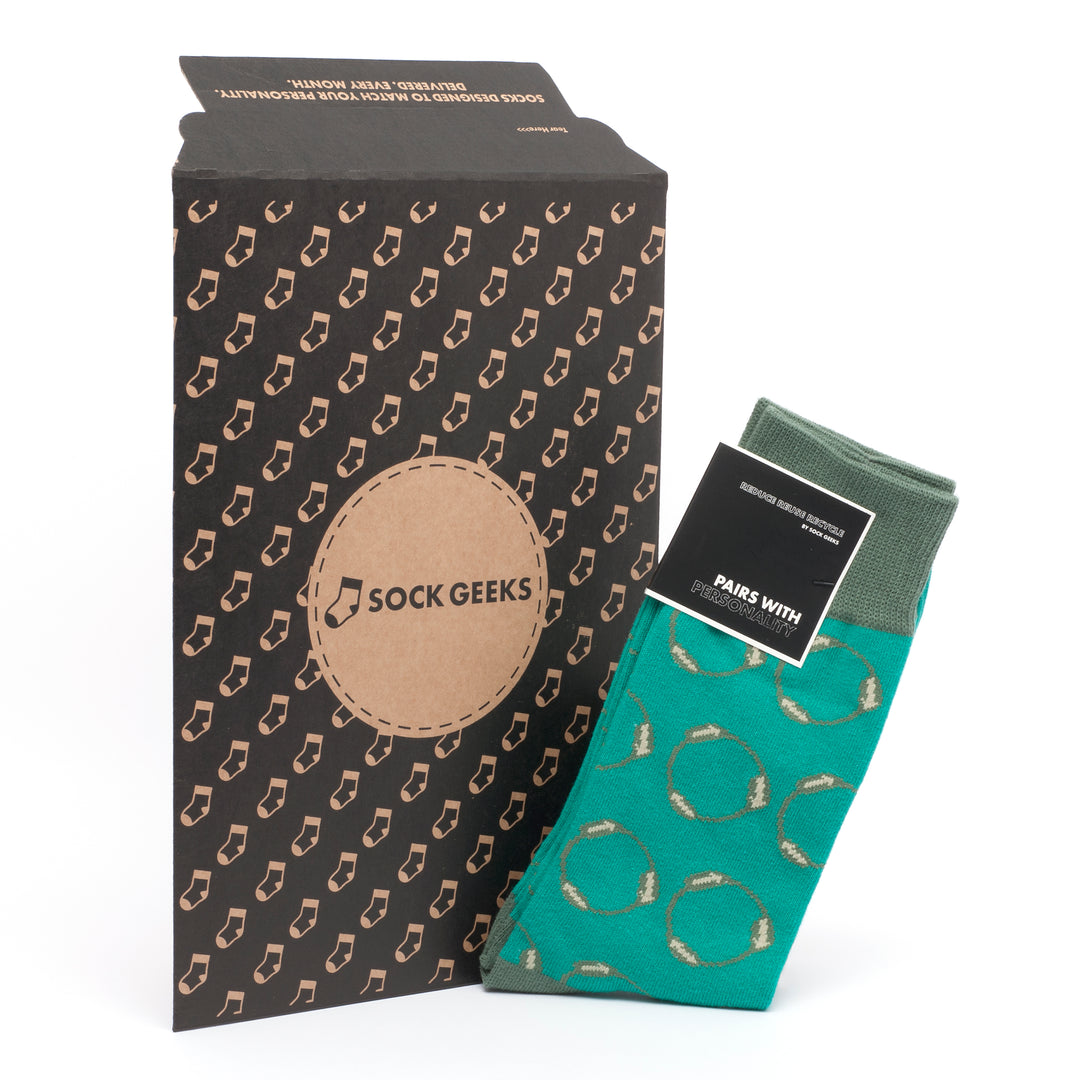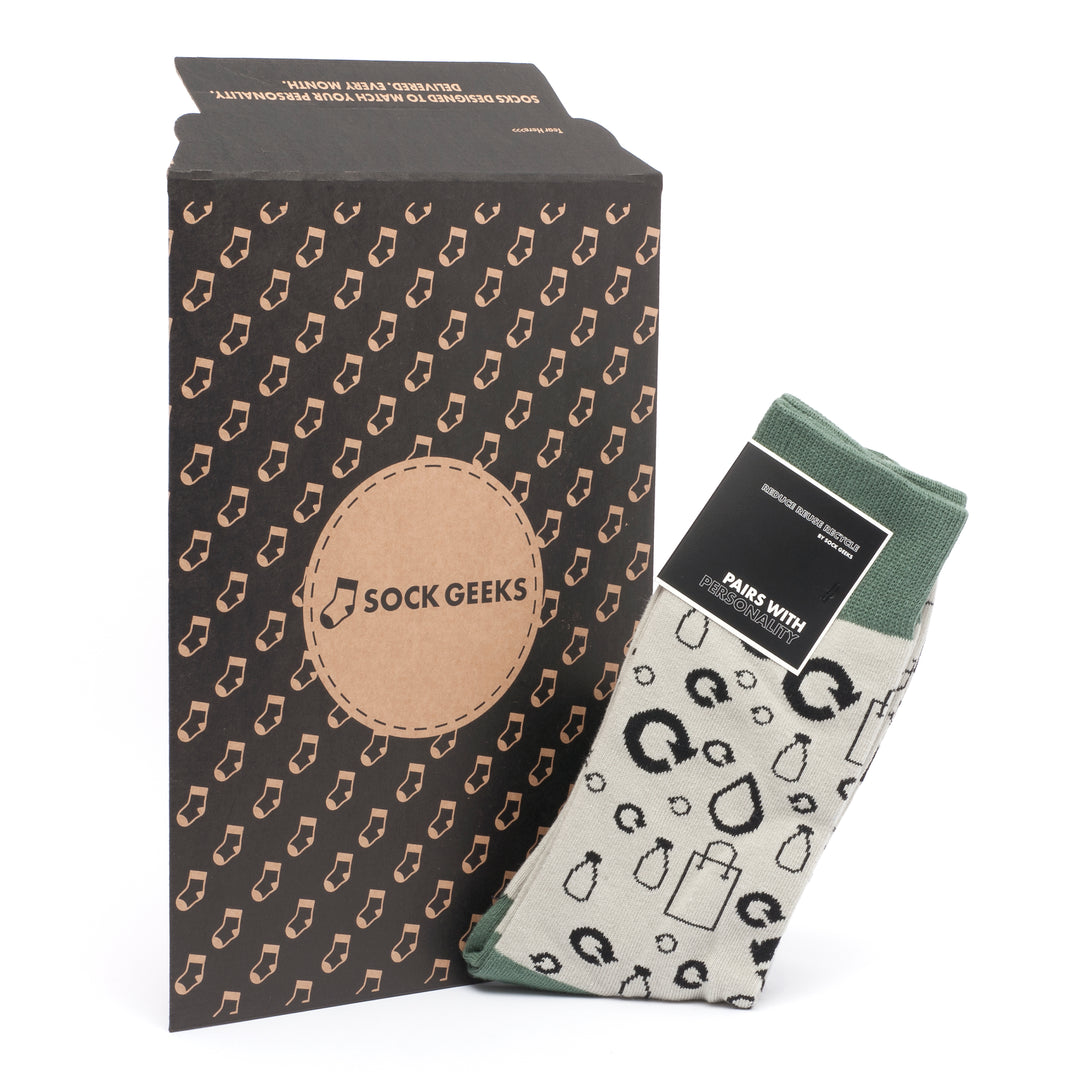Ever wondered if wearing socks to bed in the bedroom could improve your sleep? The debate on whether sleeping with socks on is beneficial for thermore and warming has sparked contrasting opinions. Some swear by the warming comfort it provides, while others can't stand the thought of it.
From regulating body temperature to enhancing circulation and warming the skin, there's more to this bedtime habit than meets the eye. So, whether you're a fervent sock supporter or firmly against it, let's unravel the truth behind sleeping with socks on and discover how it could impact your quality of sleep and temperature regulation.
Benefits of Sleeping with Socks On
Retaining Body Heat
Sleeping with socks on can help retain body heat, especially during colder nights. When your feet are warm, the blood vessels dilate, allowing for better circulation throughout the body. This can lead to a more relaxed state and improved sleep quality. By keeping your feet warm, you're essentially helping your entire body maintain its optimal temperature for rest.
For example, if you've ever been in a situation where you couldn't seem to fall asleep because of how cold your feet were, wearing socks to bed might have made all the difference in achieving a comfortable night's sleep.
Alleviating Symptoms of Raynaud's Disease
People suffering from Raynaud's disease, which causes certain areas of the body – usually fingers and toes – to feel numb and cool in response to cold temperatures or stress, may find relief by sleeping with socks on. By maintaining warmth at their extremities through wearing socks at night, they can reduce the frequency and severity of these symptoms.
Furthermore, individuals who experience hot flashes during the night due to hormonal changes or other medical conditions could benefit from wearing socks while sleeping as it helps regulate their body temperature throughout the night.
Relationship Between Body Temperature and Sleep
Impact of Cooler Extremities
When your body temperature drops before bedtime, it acts as a signal for your body to start preparing for sleep. This drop in temperature is part of the natural sleep cycle. Interestingly, wearing socks to bed can actually help this process by keeping your feet warm. When your extremities are warm, the blood vessels dilate, allowing heat to be transported from your core to your extremities more efficiently.
This phenomenon has a direct impact on how quickly you fall asleep. A study published in the journal Nature found that warming the feet causes vasodilation and may facilitate the onset of sleep. So, when considering whether or not to wear socks at night, remember that having warmer feet can aid in faster sleep onset due to improved blood flow.
Regulation of Melatonin Production
Another crucial aspect linked with temperature regulation is its effect on melatonin production. Melatonin is a hormone that helps regulate our sleep-wake cycles. The body naturally produces more melatonin when it's dark and less when it's light – this is why melatonin levels typically rise in the evening as darkness falls.
Temperature plays an important role here too; cooler temperatures prompt increased melatonin production while warmer temperatures suppress it. Wearing socks can help keep your feet warm which could potentially assist in maintaining optimal conditions for melatonin release during nighttime hours.
The Science Behind Wearing Socks in Bed
Improved Blood Flow
Wearing socks to bed can promote vasodilation, which is the dilation of blood vessels. This phenomenon occurs when the brain signals for the blood vessels in the hands and feet to dilate, allowing for improved circulation. As a result, wearing socks can lead to better blood flow throughout the body, aiding in overall relaxation and potentially contributing to faster sleep onset.
When your feet are warm due to wearing socks, this warmth helps dilate your blood vessels. With improved circulation from vasodilation, more nutrients and oxygen are delivered throughout your body. This enhanced blood flow not only promotes relaxation but also supports optimal bodily functions during sleep.
Rapid Sleep Onset
The role of warm feet in promoting rapid sleep onset cannot be overlooked. Scientific studies have shown that there is a direct connection between foot temperature and how quickly we fall asleep. When you wear socks to bed, especially if they are made of materials that retain heat well (such as wool), they help keep your feet at an ideal temperature for sleeping.
Research has indicated that people who wore socks experienced a quicker transition into deeper stages of sleep compared to those who didn't wear them. This suggests that maintaining warm feet through wearing socks may aid in achieving rapid sleep onset and improving overall sleep quality.
Improving Sleep Hygiene with Socks
Minimising Disruptions
Sleep hygiene involves creating an environment conducive to quality sleep. One aspect of this is keeping your feet warm at night. By sleeping with socks on, you can minimise disruptions caused by cold feet, which often lead to tossing and turning in bed. When your feet are comfortably warm, it helps maintain a stable body temperature, allowing you to stay asleep without interruptions.
For individuals who struggle with maintaining a comfortable body temperature during sleep, wearing socks can be a simple yet effective solution. This small change in sleep habits can significantly reduce the discomfort experienced due to cold feet, promoting uninterrupted and restful sleep.
Reducing the Risk of Insomnia
Discomfort from cold extremities can contribute to sleep problems such as insomnia. When your feet are exposed to low temperatures while sleeping, it may trigger physiological responses that disturb your ability to fall or stay asleep. By wearing socks at bedtime, you create a barrier against the cold and prevent these disturbances from affecting your sleep.
Moreover, improved blood circulation resulting from the warmth provided by socks can further aid in reducing the risk of developing sleep disorders associated with poor circulation or discomfort. This simple practice aligns with good hygiene, helping individuals establish healthier habits for better sleep quality overall.
Enhancing Overall Sleep Quality
Embracing the habit of sleeping with socks on contributes positively to enhancing overall sleep quality through warmth regulation. The comfort derived from having warm feet allows for deeper relaxation and promotes faster onset of sleep. Maintaining an optimal body temperature throughout the night supports undisturbed restfulness.
Significance of Wearing Socks to Bed
Better Sleep Quality
Sleeping with socks on can help keep your feet warm, which in turn dilates the blood vessels. This dilation sends a signal to the brain that it's time for bed, promoting a faster onset of sleep. As a result, you may experience fewer instances of waking up during the night.
When your feet are cold, the blood vessels constrict as part of the body's natural response to conserve heat. This constriction can make it harder for your body to reach an optimal temperature for sleeping. By wearing socks and keeping your feet warm, you create an environment where your body can more easily transition into deep sleep without disruptions.
Psychological Comfort
The act of putting on socks before bed is often associated with comfort and relaxation. It's like tucking yourself in under a cozy blanket – but specifically for your feet! The feeling of warmth around your toes can be psychologically comforting and soothing, helping you feel more secure and relaxed as you drift off to sleep.
For many people, this simple bedtime routine becomes a cue that signals their brain it's time to wind down and prepare for rest. Just like how brushing our teeth or reading before bed become ingrained habits associated with bedtime routines, slipping on socks could have similar psychological effects by signaling that it's time to relax and unwind.
Regulation of Body Temperature
Maintaining an optimal body temperature is crucial for achieving quality sleep. Wearing socks helps regulate body temperature by preventing heat loss from the extremities while also facilitating better blood circulation throughout the night.
By keeping our feet warm through wearing socks at night, we aid our bodies in maintaining this delicate balance necessary for uninterrupted slumber. When our core temperature remains stable throughout the night due to warmer extremities, we're less likely to wake up due to discomfort caused by being too hot or too cold.
Enhanced Blood Circulation
Wearing socks increases blood flow around the feet because they provide gentle compression which prevents fluid buildup in our lower limbs during sleep hours. Improved circulation not only promotes overall foot health but also contributes positively towards getting better shut-eye without disturbances or discomfort caused by poor circulation issues.
Managing Body Temperature for Better Sleep
Influence of Foot Warmth on Thermoregulation
The influence of foot warmth on thermoregulation during sleep is significant. When your feet are warm, the blood vessels dilate, allowing for efficient heat dissipation and regulation. This process helps to lower your core body temperature, which is essential for falling asleep quickly.
Having warm feet before bed can actually help signal to your body that it's time to wind down and prepare for rest. As you start to doze off, your body naturally redistributes heat from its core out toward the skin, including the extremities like your feet. By wearing socks before bed, you're essentially jumpstarting this natural process by ensuring that your feet are already warm.
Importance of Balanced Body Heat Distribution
Maintaining a balanced distribution of body heat is crucial for achieving quality rest. Your circadian rhythms play a vital role in regulating body temperature throughout the day and night. During the evening hours as you prepare for sleep, there's a natural drop in body temperature that signals bedtime.
However, if your feet are cold or if they experience rapid heat loss, it can interfere with this delicate balance and disrupt the ease with which you fall asleep. By keeping your feet comfortably warm through wearing socks at night or even indulging in a brief warm foot bath before bed, you're aiding this process by supporting optimal thermoregulation.
Sleeping with Socks On: Health Considerations
Improved Circulation
Sleeping with socks on can be beneficial for individuals with poor circulation. The warmth provided by the socks helps to dilate the blood vessels in the feet, promoting better blood flow. This improved circulation can prevent cold feet and may even aid in a more restful night's sleep.
For people who struggle with cold extremities, wearing socks while sleeping can help maintain a comfortable temperature throughout the night. By keeping the feet warm, individuals are less likely to experience discomfort or disruptions due to chilly toes.
Those who suffer from Raynaud's disease—a condition that causes certain areas of the body, such as fingers and toes, to feel numb and cool in response to cold temperatures or stress—may find relief from symptoms by wearing socks during sleep.
Reduced Risk of Overheating
It is important to consider potential risks associated with overheating during sleep when deciding whether to wear socks at night. While maintaining warmth is essential for comfort and good circulation, excessive heat can lead to discomfort and disrupted sleep.
Wearing thick or thermal socks may cause some individuals to overheat during sleep. This could result in sweating excessively through the night, leading to discomfort and potentially disturbing their rest. It's crucial for individuals considering sleeping with socks on to choose breathable materials that provide warmth without causing overheating.
Diabetes and Neuropathy Considerations
Individuals living with diabetes or neuropathy should be cautious about wearing socks while sleeping, as these conditions can affect sensitivity in the feet. For diabetic patients especially, reduced sensation due to neuropathy increases the risk of injuries going unnoticed if they occur.
The use of loose-fitting non-constrictive cotton socks is recommended for those dealing with diabetes-related foot issues because it reduces pressure on sensitive areas like bunions or calluses which could lead complications such as ulcers forming under pressure points from tight elastic bands around ankles caused by standard sock styles worn overnight.
Strategies for Regulating Body Temperature at Night
Adjusting Room Temperature
Maintaining a comfortable temperature in your bedroom can significantly impact the effectiveness of sleeping with socks on. If you decide to wear socks to bed, it's essential to ensure that the room temperature complements this choice. For instance, if the room is too warm, wearing thick socks might make you feel excessively hot and uncomfortable. On the other hand, if the room is too cold, wearing thin or breathable socks may not be sufficient to keep your feet warm.
It's important to strike a balance by adjusting your thermostat or using additional bedding such as blankets or comforters. By doing so, you can create an environment that works harmoniously with sock use and promotes a good night's sleep.
Choosing Appropriate Sock Materials
The type of material used in your socks plays a crucial role in regulating body temperature while sleeping. Opting for breathable materials like cotton or wool allows air circulation around your feet, preventing them from getting too sweaty or overheated. Conversely, synthetic materials may trap heat and moisture, leading to discomfort during sleep.
When selecting socks for bedtime use, consider those made from natural fibres that offer breathability and moisture-wicking properties. This way, you can maintain optimal foot temperature without feeling clammy or excessively warm under the covers.
Incorporating Layers and Blankets
In addition to wearing socks tailored for breathability and comfort at night, incorporating layers of bedding can help achieve balanced warmth throughout your body while asleep. By layering sheets and blankets according to personal preference - whether it's adding an extra blanket over just the lower half of your body - you can regulate overall body temperature effectively.
Creating layers also provides flexibility; should you find yourself feeling too warm during sleep due to sock usage or other factors affecting bedtime routine, removing a layer of bedding becomes easier than adjusting room temperatures mid-sleep.
Enhancing Circulation Through Socks
Promoting Blood Circulation
Wearing socks to bed can actually help promote better blood circulation. The warmth retained by the socks throughout the night helps prevent cold-induced vasoconstriction in the extremities, such as the feet. This means that blood vessels are less likely to constrict due to the cold, allowing for better blood flow.
The warmth provided by wearing socks at night acts like a foot bath, keeping your feet warm and helping them maintain a comfortable temperature. When your feet are warm, it encourages good blood flow and prevents any potential swelling or discomfort caused by poor circulation.
Impact on Preventing Cold-Induced Vasoconstriction in Extremities
Individuals who are prone to having cold feet and hands can benefit greatly from wearing socks while sleeping. Conditions like Raynaud's disease cause certain areas of the body—usually fingers and toes—to feel numb and cool in response to stress or cold temperatures. By keeping these areas warm through wearing socks at night, you can potentially reduce the frequency of symptoms associated with this condition.
For people who struggle with poor circulation due to various health issues or simply because they tend to get chilly easily, sleeping with socks on can be an effective way of maintaining healthy blood flow throughout their bodies.
Final Remarks
You've now uncovered the surprising benefits of wearing socks to bed, from improving circulation to regulating body temperature for better sleep. By understanding the science behind this simple sleep hack, you can enhance your sleep hygiene and overall well-being. So, tonight, why not slip on a pair of comfy socks and experience the difference for yourself?
Take charge of your sleep quality and try out this easy yet effective method. Your body will thank you, and you might just find yourself waking up feeling more refreshed and rejuvenated than ever before.
Frequently Asked Questions
Is it beneficial to sleep with socks on?
Wearing socks to bed can help improve circulation and regulate body temperature, leading to better sleep. It prevents heat loss through the feet, promoting relaxation and enhancing overall sleep quality.
How does wearing socks affect body temperature during sleep?
By keeping your feet warm, wearing socks can help dilate blood vessels and signal the brain that it's time for sleep. This helps in regulating body temperature throughout the night, ensuring a more comfortable and restful slumber.
Are there any health considerations when sleeping with socks on?
For most people, sleeping with socks on is safe and offers various benefits. However, individuals with certain medical conditions or sensory issues may need to consult a healthcare professional before making this choice.
Can wearing socks at night enhance circulation?
Yes, wearing socks while sleeping can aid in improving blood circulation by preventing constriction of blood vessels due to cold temperatures. This allows for better distribution of heat throughout the body and promotes overall well-being.
What are some thermoregulation strategies for regulating body temperature at night using socks?
Aside from wearing regular cotton or wool socks, investing in specialised moisture-wicking or thermal-regulating bedsocks can offer additional comfort. These options provide optimal warmth without causing overheating during the night.




















Leave a comment